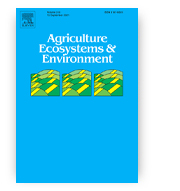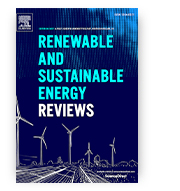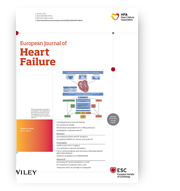
Research papers of the month – July
We present the highest-score research papers of July 2021.
Dariusz Strugarek, Krzysztof Sośnica, Radosław Zajdel, Grzegorz Bury
Lilla Mielnik, Edyta Hawelke, Jerzy Weber, Lidia Oktaba, Jerzy Jonczak, Marek Podlasiński
Marek Furmankiewicz, Richard J. Hewitt, Jan Kazak
Radosław Sierpiński, Krystian Josiak, Tomasz Suchocki, Katarzyna Wojtas-Polc, Grzegorz Mazur, Aleksandra Butrym, Piotr Rozentryt, Peter van der Meer, Josep Comin-Colet, Stephan von Haehling, Wojciech Kosmala, Monika Przewłocka-Kosmala, Waldemar Banasiak, Jolanta Nowak, Adriaan A. Voors, Stefan D. Anker, John GF Cleland, Piotr Ponikowski, Ewa Anita Jankowska
Detector-specific issues in Satellite Laser Ranging to Swarm-A/B/C satellites
Dariusz Strugarek, Krzysztof Sośnica, Radosław Zajdel, Grzegorz Bury
Measurement
 Satellite Laser Ranging (SLR) to Low Earth Orbiters (LEOs) is traditionally used to validate orbits derived by microwave techniques, e.g., Global Positioning System (GPS). For most LEOs, SLR is the only possibility to independently assess the GPS orbit quality, to calibrate onboard instruments, and to reveal otherwise unnoticed systematic errors. However, the detector-specific errors in SLR measurements may corrupt the SLR observations and derived parameters. We found that the stations employing Compensated Single-Photon Avalanche Diode (CSPAD) detectors are characterized by the lowest, 15 and 21 mm root-mean-square residuals for reduced-dynamic and kinematic orbits, respectively, and show almost no dependency on the satellite nadir angle nor the observation acquisition time, as opposed to stations with Multi-Channel Plates (MCP) and Photomultiplier Tube (PMT) detectors. SLR observations to Swarm-A/B/C can also be used for the determination of SLR station coordinates characterized by 27, 15, 18 mm interquartile range repeatability for the Up, North, and East components, respectively.
Satellite Laser Ranging (SLR) to Low Earth Orbiters (LEOs) is traditionally used to validate orbits derived by microwave techniques, e.g., Global Positioning System (GPS). For most LEOs, SLR is the only possibility to independently assess the GPS orbit quality, to calibrate onboard instruments, and to reveal otherwise unnoticed systematic errors. However, the detector-specific errors in SLR measurements may corrupt the SLR observations and derived parameters. We found that the stations employing Compensated Single-Photon Avalanche Diode (CSPAD) detectors are characterized by the lowest, 15 and 21 mm root-mean-square residuals for reduced-dynamic and kinematic orbits, respectively, and show almost no dependency on the satellite nadir angle nor the observation acquisition time, as opposed to stations with Multi-Channel Plates (MCP) and Photomultiplier Tube (PMT) detectors. SLR observations to Swarm-A/B/C can also be used for the determination of SLR station coordinates characterized by 27, 15, 18 mm interquartile range repeatability for the Up, North, and East components, respectively.
DOI:10.1016/j.measurement.2021.109786
Changes in the soil hydrophobicity and structure of humic substances in sandy soil taken out of cultivation
Lilla Mielnik, Edyta Hawelke, Jerzy Weber, Lidia Oktaba, Jerzy Jonczak, Marek Podlasiński
Agriculture Ecosystems & Environment
 The aim of the research was to determine how abandoning agricultural land affects soil hydrophobicity and humic substances structure, with a special emphasis on fluorescent properties. Arable and abandoned sandy soils in central Poland were investigated from May to December of a very dry year. The investigations conducted indicated that land use influences the direction of the soil organic matter (SOM) humification process, causing changes in the functional properties of the soil. Taking sandy soil out of cultivation and its spontaneous afforestation resulted in a significant decrease of moisture in the surface layer of the abandoned soil. The change in water regime influenced the direction of SOM transformation, but a period of 30 years was not long enough to cause changes in the elemental and/or fractional composition of humic substances. Nevertheless, the modified conditions of SOM transformation resulted in a marked increase in soil hydrophobicity. Fluorescence investigation proved the predominance of simpler fulvic-like structures in humic acid (HA) extracted from the abandoned soil, which indicated a relatively low molecular weight or a smaller number of chromophores with conjugated double bonds, and a lower humification degree of HA. Obtained results showed that fluorescence spectroscopy can be successfully used as a sensitive technique for the qualitative characterisation of the structures of humic substances transformed under different environmental conditions.
The aim of the research was to determine how abandoning agricultural land affects soil hydrophobicity and humic substances structure, with a special emphasis on fluorescent properties. Arable and abandoned sandy soils in central Poland were investigated from May to December of a very dry year. The investigations conducted indicated that land use influences the direction of the soil organic matter (SOM) humification process, causing changes in the functional properties of the soil. Taking sandy soil out of cultivation and its spontaneous afforestation resulted in a significant decrease of moisture in the surface layer of the abandoned soil. The change in water regime influenced the direction of SOM transformation, but a period of 30 years was not long enough to cause changes in the elemental and/or fractional composition of humic substances. Nevertheless, the modified conditions of SOM transformation resulted in a marked increase in soil hydrophobicity. Fluorescence investigation proved the predominance of simpler fulvic-like structures in humic acid (HA) extracted from the abandoned soil, which indicated a relatively low molecular weight or a smaller number of chromophores with conjugated double bonds, and a lower humification degree of HA. Obtained results showed that fluorescence spectroscopy can be successfully used as a sensitive technique for the qualitative characterisation of the structures of humic substances transformed under different environmental conditions.
DOI:10.1016/j.agee.2021.107554
Can rural stakeholders drive the low-carbon transition? Analysis of climate-related activities planned in local development strategies in Poland
Marek Furmankiewicz, Richard J. Hewitt, Jan Kazak
Renewable & Sustainable Energy Reviews
 In the postulated efforts to limit adverse climate change (CC), increasing attention is paid to the development of distributed renewable energy (RE) that meets the needs of local communities on the spot. This article analyses the objectives, planned actions and performance indicators related to CC and RE, defined by national and local stakeholders in: (1) the national Rural Development Programme (RDP) 2014–2020 in Poland and (2) in the bottom-up Local Development Strategies (LDS) financed from RDP and using a Community-Led Local Development approach. The content analysis method was used. We found that the strategy documents considered, created in the years 2014–2015, paid relatively little attention to local actions related to CC and RE. Some educational activities related to adaptation and mitigation of CC were planned in 66% of LDS, while investment support for RE was planned only in 9% of the LDS. Traditional goals such as supporting local businesses and farmers, local cultural heritage and the development of human and social capital were seen as more important. The results of the analysis suggest a relatively low level of interest from rural-policy actors in Poland in implementing the climate-friendly objectives of the Europe 2020 strategy. This article contributes to understanding why Poland failed to meet the European 2020 RE development goals. These issues are discussed in the context of national and continental climate policy and problems of transformation to post-carbon society.
In the postulated efforts to limit adverse climate change (CC), increasing attention is paid to the development of distributed renewable energy (RE) that meets the needs of local communities on the spot. This article analyses the objectives, planned actions and performance indicators related to CC and RE, defined by national and local stakeholders in: (1) the national Rural Development Programme (RDP) 2014–2020 in Poland and (2) in the bottom-up Local Development Strategies (LDS) financed from RDP and using a Community-Led Local Development approach. The content analysis method was used. We found that the strategy documents considered, created in the years 2014–2015, paid relatively little attention to local actions related to CC and RE. Some educational activities related to adaptation and mitigation of CC were planned in 66% of LDS, while investment support for RE was planned only in 9% of the LDS. Traditional goals such as supporting local businesses and farmers, local cultural heritage and the development of human and social capital were seen as more important. The results of the analysis suggest a relatively low level of interest from rural-policy actors in Poland in implementing the climate-friendly objectives of the Europe 2020 strategy. This article contributes to understanding why Poland failed to meet the European 2020 RE development goals. These issues are discussed in the context of national and continental climate policy and problems of transformation to post-carbon society.
DOI:10.1016/j.rser.2021.111419
High Soluble Transferrin Receptor in Patients With Heart Failure: a Measure of Iron Deficiency And a Strong Predictor of Mortality
Radosław Sierpiński, Krystian Josiak, Tomasz Suchocki, Katarzyna Wojtas-Polc, Grzegorz Mazur, Aleksandra Butrym, Piotr Rozentryt, Peter van der Meer, Josep Comin-Colet, Stephan von Haehling, Wojciech Kosmala, Monika Przewłocka-Kosmala, Waldemar Banasiak, Jolanta Nowak, Adriaan A. Voors, Stefan D. Anker, John GF Cleland, Piotr Ponikowski, Ewa Anita Jankowska
European Journal of Heart Failure
 Aims: Iron deficiency (ID) is frequent in heart failure (HF), linked with exercise intolerance and poor prognosis. Intravenous iron repletion improves clinical status in HF patients with left ventricular ejection fraction (LVEF) ≤45%. However, uncertainty exists about the accuracy of serum biomarkers in diagnosing ID. The aims of this study were (i) to identify the iron biomarker with the greatest accuracy for the diagnosis of ID in bone marrow in patients with ischaemic HF, and (ii) to establish the prevalence of ID using this biomarker and its prognostic value in HF patients. Methods and results: Bone marrow was stained for iron in 30 patients with ischaemic HF with LVEF ≤45% and 10 healthy controls, and ID was diagnosed for 0–1 grades (Gale scale). A total of 791 patients with HF with LVEF ≤45% were prospectively followed up for 3 years. Serum ferritin, transferrin saturation, soluble transferrin receptor (sTfR) were assessed as iron biomarkers. Most patients with HF (n = 25, 83%) had ID in bone marrow, but none of the controls (P < 0.001). Serum sTfR had the best accuracy in predicting ID in bone marrow (area under the curve 0.920, 95% confidence interval 0.761–0.987, for cut-off 1.25 mg/L sensitivity 84%, specificity 100%). Serum sTfR was ≥1.25 mg/L in 47% of HF patients, in 56% and 46% of anaemics and non-anaemics, respectively (P < 0.05). The reclassification methods revealed that serum sTfR significantly added the prognostic value to the baseline prognostic model, and to the greater extent than plasma N-terminal pro B-type natriuretic peptide. Based on internal derivation and validation procedures, serum sTfR ≥1.41 mg/L was the optimal threshold for predicting 3-year mortality, independent of other established variables. Conclusions: High serum sTfR accurately reflects depleted iron stores in bone marrow in patients with HF, and identifies those with a high 3-year mortality.
Aims: Iron deficiency (ID) is frequent in heart failure (HF), linked with exercise intolerance and poor prognosis. Intravenous iron repletion improves clinical status in HF patients with left ventricular ejection fraction (LVEF) ≤45%. However, uncertainty exists about the accuracy of serum biomarkers in diagnosing ID. The aims of this study were (i) to identify the iron biomarker with the greatest accuracy for the diagnosis of ID in bone marrow in patients with ischaemic HF, and (ii) to establish the prevalence of ID using this biomarker and its prognostic value in HF patients. Methods and results: Bone marrow was stained for iron in 30 patients with ischaemic HF with LVEF ≤45% and 10 healthy controls, and ID was diagnosed for 0–1 grades (Gale scale). A total of 791 patients with HF with LVEF ≤45% were prospectively followed up for 3 years. Serum ferritin, transferrin saturation, soluble transferrin receptor (sTfR) were assessed as iron biomarkers. Most patients with HF (n = 25, 83%) had ID in bone marrow, but none of the controls (P < 0.001). Serum sTfR had the best accuracy in predicting ID in bone marrow (area under the curve 0.920, 95% confidence interval 0.761–0.987, for cut-off 1.25 mg/L sensitivity 84%, specificity 100%). Serum sTfR was ≥1.25 mg/L in 47% of HF patients, in 56% and 46% of anaemics and non-anaemics, respectively (P < 0.05). The reclassification methods revealed that serum sTfR significantly added the prognostic value to the baseline prognostic model, and to the greater extent than plasma N-terminal pro B-type natriuretic peptide. Based on internal derivation and validation procedures, serum sTfR ≥1.41 mg/L was the optimal threshold for predicting 3-year mortality, independent of other established variables. Conclusions: High serum sTfR accurately reflects depleted iron stores in bone marrow in patients with HF, and identifies those with a high 3-year mortality.
DOI:10.1002/ejhf.2036










